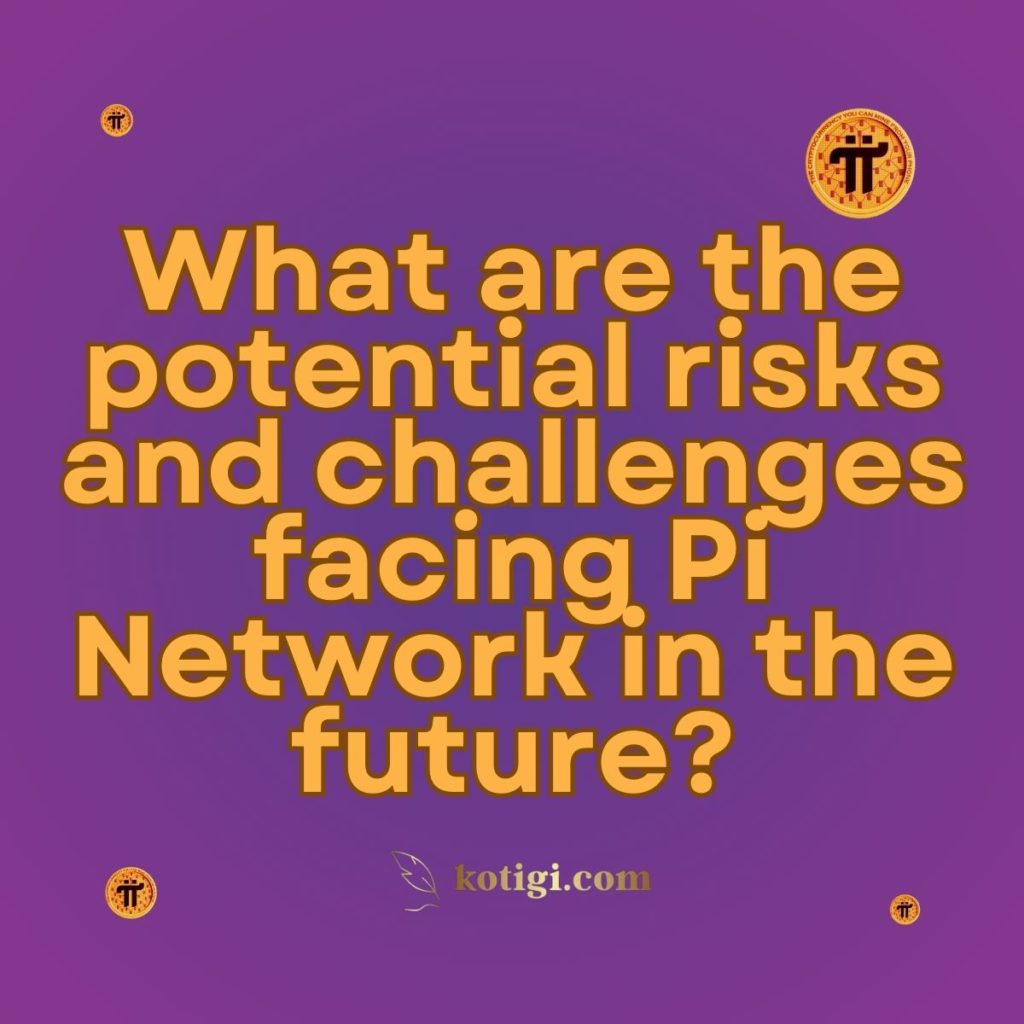
What are the potential risks and challenges facing Pi Network in the future?
As Pi Network grows and evolves, it faces several potential risks and challenges that could impact its long-term success. These challenges range from regulatory issues to technological hurdles and market competition. Understanding these risks is crucial for the Pi Network team and its community to navigate the future effectively.
1. Regulatory and Legal Challenges
1.1. Regulatory Scrutiny and Compliance
One of the most significant risks for Pi Network is the increasing scrutiny from regulators worldwide. As cryptocurrencies gain popularity, governments are implementing stricter regulations to combat issues like money laundering, fraud, and tax evasion. Pi Network must navigate these complex regulatory landscapes, ensuring compliance with anti-money laundering (AML) and know-your-customer (KYC) laws in various jurisdictions. Failure to comply could result in legal penalties, restrictions, or even a ban on the platform in certain regions.
1.2. Uncertain Legal Status
The legal status of cryptocurrencies varies significantly from one country to another. In some regions, the legal framework surrounding digital currencies is still developing, creating uncertainty for projects like Pi Network. This uncertainty can deter potential users and investors, as they may be concerned about the legal risks associated with using or holding Pi coins.
2. Technological Challenges
2.1. Scalability Issues
As Pi Network’s user base continues to grow, scalability becomes a critical concern. The network must be able to handle an increasing number of transactions without compromising speed or security. If the infrastructure fails to scale effectively, users may experience slow transaction times or other technical issues, leading to frustration and potential loss of confidence in the platform.
2.2. Security Vulnerabilities
Blockchain technology is generally secure, but no system is immune to potential vulnerabilities. As Pi Network grows, it may become a target for hackers seeking to exploit any weaknesses in the system. Ensuring the network’s security requires continuous updates, audits, and the implementation of best practices to protect against cyber threats. A significant security breach could damage the network’s reputation and erode user trust.
3. Market and Competitive Risks
3.1. Intense Market Competition
The cryptocurrency market is highly competitive, with thousands of projects vying for attention and investment. Pi Network must differentiate itself from other cryptocurrencies and mobile mining apps to attract and retain users. This requires continuous innovation, effective marketing, and a clear value proposition. Failure to stand out in a crowded market could result in a decline in user interest and engagement.
3.2. Volatility in Cryptocurrency Markets
The value of cryptocurrencies is notoriously volatile, and Pi is no exception. Market fluctuations can be driven by various factors, including regulatory news, technological developments, and broader economic trends. Significant drops in the value of Pi coins could discourage users and investors, potentially leading to a decline in the network’s growth and activity.
4. Adoption and User Engagement Challenges
4.1. Achieving Real-World Adoption
One of the primary challenges for Pi Network is achieving widespread real-world adoption. While the network has gained a large user base, it must translate this user interest into practical applications, such as enabling transactions, payments, and other financial activities using Pi coins. Without real-world utility, users may lose interest, and the network could struggle to maintain momentum.
4.2. Maintaining User Engagement
As the initial excitement around Pi Network fades, maintaining user engagement becomes increasingly important. The network must continue to provide incentives for users to stay active, such as rewarding contributions, providing educational content, and fostering a strong community. If users become disengaged or inactive, the network’s growth and sustainability could be at risk.
5. Economic and Financial Risks
5.1. Managing Inflation and Coin Supply
Pi Network must carefully manage the supply of Pi coins to prevent inflation, which could devalue the currency and reduce its attractiveness to users and investors. Striking the right balance between rewarding users and maintaining a stable coin supply is crucial for the network’s long-term economic sustainability.
5.2. Uncertain Monetization Strategy
For Pi Network to be sustainable in the long run, it needs a clear and viable monetization strategy. Whether through transaction fees, partnerships, or other revenue streams, the network must generate sufficient income to fund its operations and development. Without a sustainable business model, the network could face financial difficulties, limiting its ability to grow and innovate.
6. Community and Governance Challenges
6.1. Managing Community Expectations
Pi Network’s large and diverse community has high expectations for the project’s success. Managing these expectations is challenging, especially when development timelines are delayed or when market conditions change. The network must maintain transparent communication with its users to build trust and manage potential disappointment.
6.2. Governance and Decision-Making
As Pi Network grows, establishing a clear and effective governance structure becomes increasingly important. The network must navigate the complexities of decentralized decision-making while ensuring that key decisions are made efficiently and in the best interest of the community. Poor governance could lead to internal conflicts, slow decision-making, and a lack of direction for the network.
Conclusion
Pi Network faces several potential risks and challenges that could impact its future success. These include regulatory and legal hurdles, technological issues, market competition, user engagement challenges, economic risks, and governance complexities. To navigate these challenges, Pi Network must focus on continuous innovation, strong community engagement, compliance with regulations, and the development of a sustainable economic model. By addressing these risks proactively, Pi Network can position itself for long-term success in the evolving cryptocurrency landscape.





